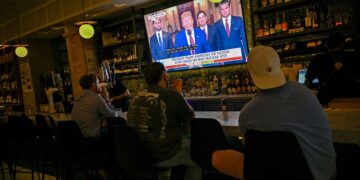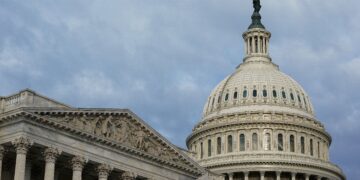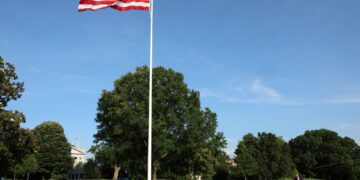(Bloomberg) — For investors and traders trying to game out where the US economy, the stock market or interest rates are headed in the second half of 2025, good luck. There’s simply too much uncertainty to be sure of anything right now.
Most Read from Bloomberg
Take it from Federal Reserve Chair Jerome Powell, who used variations of the word “uncertain” nearly 20 times in his post-meeting press conference on Wednesday. Wall Street pros were looking to Powell and the Fed for clues about what’s next in a world beset by risks — from escalating war in the Middle East to rising trade tensions between the US and China. But the answer they got was a resounding “we don’t know,” with the central bank remaining in wait-and-see mode before deciding whether it can safely start to lower interest rates.
“If anything, the Fed’s read-and-react stance showed just how clueless everyone is right now,” said Scott Ladner, chief investment officer at Horizon Investments. “As an investor, you cannot trade this, you cannot get ahead of it.”
The S&P 500 Index (^SPX) is within 3% of a record high, but it’s been holding tight in a narrow range lately. There have been just two sessions this month with moves of more than 1%, and the benchmark has barely budged over the past two weeks. It’s been a surprisingly stagnant period considering oil has soared and the dollar has plunged on the global developments.
Headline Swings
The problem for equity traders appears to be a lack of clarity as sentiment changes from one headline to the next.
You could see it in the stock market action late this week. On Thursday, which was a market holiday in the US, futures contracts on the S&P 500 sank more than 1% in the morning following reports that US officials were preparing for a possible strike on Iran in the coming days. Then, President Donald Trump signaled that he wanted to give diplomacy a chance, which halted the decline. And Friday morning Fed Governor Christopher Waller said he could see interest-rate cuts starting as soon as July, which sent S&P futures jumping into the beginning of the regular session.
But those gains turned out to be short-lived as Iran and Israel traded missile attacks and news hit that the Trump administration is ready to crack down on semiconductor plants in China. After all the back-and-forth, the index closed down 0.2% on the day.
“The S&P 500 is not breaking out one way or another because we’ve got crosswinds,” Ladner said.
Fed officials left interest rates unchanged this week, with the majority of voting members seeing at least two more quarter-point cuts this year. Those views are essentially guesses, however, because the pace of inflation in the coming months and the resilience of the labor market remain unknown in the face of mounting risks.
“No one holds these rate paths with a lot of conviction,” Powell said at his press conference. “We expect a meaningful amount of inflation in the coming months, and we have to take that into account.”
And Wall Street is positioning accordingly. A gauge of equity positioning fell this week, led by discretionary investors who went from slightly below neutral to more notably underweight, data compiled by Deutsche Bank AG strategists including Parag Thatte show. With that cut, aggregate equity positioning now sits in the middle of the bottom-half of its usual band, the data show.
The mood among Wall Street prognosticators is equally mixed. Swaps traders are pricing in a roughly 62% chance the Fed will lower rates in September, but there isn’t a lot of conviction backing those positions.
Michael Feroli, chief US economist at JPMorgan Securities wrote in a note to clients Wednesday that he foresees one cut this year, at the Fed’s December meeting. UBS’s senior US economist Brian Rose said that while the bank’s base case still calls for 100 basis points of cuts starting in September, he sees risks skewed toward a later start to easing. And Bank of America economists led by Aditya Bhave wrote in a note on Wednesday that they aren’t expecting any rate reductions this year.
Uncharted Territory
“The Fed too is facing an uncharted territory,” said Bill Sterling, global strategist at GW&K Investment Management in Boston. “We haven’t had tariff hikes this large in modern history, and there isn’t an easy model they can go to.”
The S&P 500 is up 1.5% for the year after a stunning rebound from the brink of a bear market in April, when Trump unveiled his sweeping global tariffs. The gauge soared 19% from April 8, just before Trump paused the bulk of his levies, through the end of May on hopes that the trade war wouldn’t turn out to be as bad as feared. But since then, the S&P has been pretty much stagnant, taking a few steps forward and a few steps back as each new headline rolls in.
“Long-term investors will be wise not to make abrupt shifts in portfolio allocations due to news headlines,” Sterling said.
The challenge for investors is that the same dynamics that powered the S&P 500 to gains of more than 20% in 2023 and 2024 — the emergence of artificial intelligence, strong corporate fundamentals, and a resilient consumer — remain intact. But what’s holding back optimism is everything else, the uncertainty around policy, geopolitics, slowing growth and creeping signs of stress at the bottom end of consumer spending.
At their meeting this week, Fed officials downgraded their estimates for economic growth this year and lifted their forecasts for unemployment and inflation.
Economic data hasn’t offered much help either, with indications heading in divergent directions.
A slew of figures pointed to early signs of the economy slowing down. US factory activity contracted in May for a third consecutive month. Industrial production declined in May for the second time in three months. A gauge of imports fell to a 16-year low. Job growth moderated. And May retail sales fell by the most since the start of the year.
But that flies in the face of the latest reading in the consumer price index, a key inflation gauge, which showed US prices in May rose by less than forecast for the fourth month in a row, suggesting consumers have yet to feel the pinch of tariffs. Of course, those numbers can change quickly if higher levies set in and inflation jumps.
All of which makes a hard road even tougher for traders trying to figure out how to position for the second half of 2025.
“The Fed has laid out its reaction function,” said Kevin Brocks of 22V Research. “But investors will have to wait and see what the impact of tariffs on inflation actually is.”
Most Read from Bloomberg Businessweek
©2025 Bloomberg L.P.


















